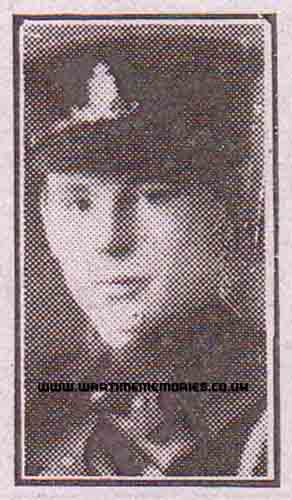Your message will be forwarded to the last contact details we have, your email address will not be passed on, they can reply to you via this messaging system.
Please scroll down to send a message.
Gnr. Harold Hulmes
British Army 208 Siege Battery Royal Garrison Artillery
from:Stockport
(d.17th Sep 1917)
Harold Hulmes was born in the Manchester district of Hulme and spent his early years there. He was the second son of Herbert, a dairyman and grocer, and Emma. His older brother was called Herbert after their father and would also serve in the army. By the time of the War, the family had moved to 114 Wellington Road South, Stockport and Harold was working locally for a firm of iron merchants Herbert Parkes and Nephew at their St Petersgate premises.
Harold enlisted into the army at Stockport in October 1915 and was assigned to the artillery. His original unit was the 145th (Stockport) Heavy Battery, a Territorial unit of the Royal Garrison Artillery. His original service number was 4175 and he must have served with the Battery until at least early 1917, as his six-digit number was not issued until then and is one associated with the Battery. It is not known when or why he was transferred to the 208th Siege Battery although most transfers were as a result of a man being wounded or otherwise away from his unit due to sickness for a considerable while. When he was fit enough to return to duty, the new unit will have been in greater need of replacements.
The Siege Batteries fired the heaviest weapons in the British arsenal and were used to batter enemy strongpoints. In mid-September 1917, the Third Battle of Ypres had been under way for several weeks and Harold's Battery would have firing to support the infantry attacks. One of his comrades wrote home to tell Mr and Mrs Hulmes what had happened. The night that he volunteered to take the despatch, he was severely wounded and although in that condition he acted as only a true British hero would do for he delivered his despatch and was then admitted to hospital where he eventually passed away and was laid to rest beside his dead hero comrades.
The hospital that his comrade mentions will have been the Dressing Station at Reninghelst staffed by the Royal Army Medical Corps. It was situated a little way behind the front line. Its job was to do no more than patch a man up sufficiently to allow him to be further evacuated to a field hospital perhaps some 20 miles away. Clearly, there was nothing to be done for Harold.
